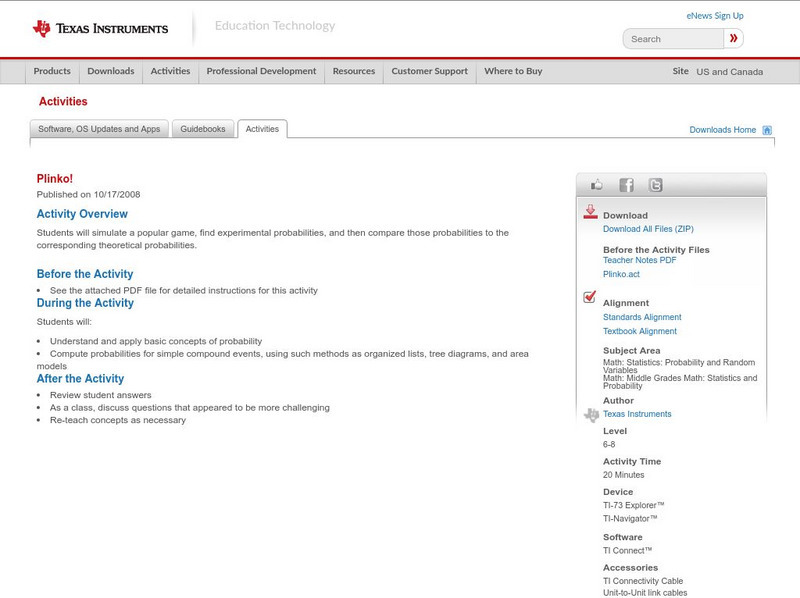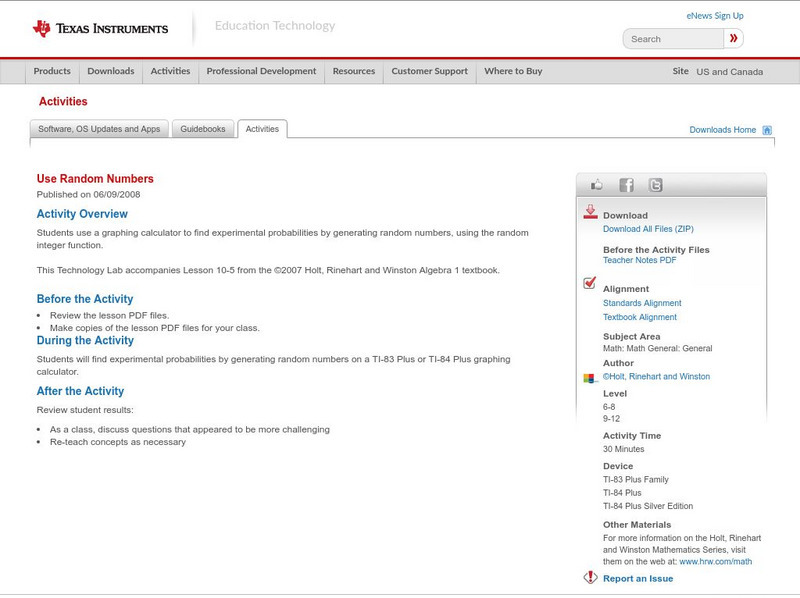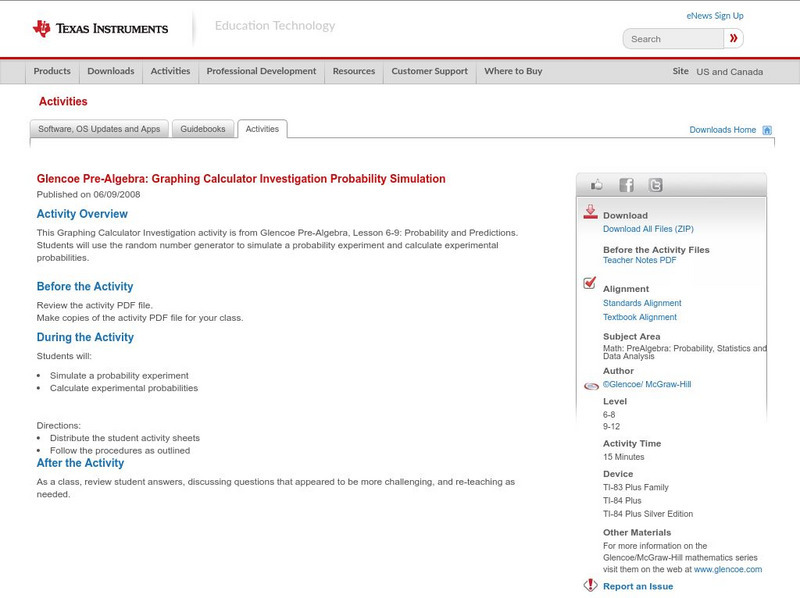Curated OER
Heads or Tails
Seventh graders compare experimental and theoretical probabilities. In this comparing experimental and theoretical probabilities lesson, 7th graders discuss the theoretical probability of flipping a coin. Students flip a coin 25 times...
Texas Instruments
Texas Instruments: Plinko!
In this activity, students will simulate a popular game, find experimental probabilities, and then compare those probabilities to the corresponding theoretical probabilities.
Texas Instruments
Texas Instruments: Use Random Numbers
Students use a graphing calculator to find experimental probabilities by generating random numbers, using the random integer function. This Technology Lab accompanies Lesson 10-5 from the 2007 Holt, Rinehart and Winston Algebra 1 textbook.
Texas Instruments
Texas Instruments: Heads Up!
In this activity, students study some important concepts of probability. They use coin tossing experiments to determine the probability of a tossed coin coming up heads. They examine both short and long term experimental probabilities...
Texas Instruments
Texas Instruments: Graphing Calculator Investigation Probability Simulation
Students can use the random number generator to simulate a probability experiment and calculate experimental probabilities.
Shodor Education Foundation
Shodor Interactivate: Crazy Choices Game
Compare theoretical and experimental probabilities, using dice, cards, spinners, or coin tosses. Three different probabilities can be compared at once.
Shodor Education Foundation
Shodor Interactivate: Probability
Pupils learn about probability by predicting the outcome of planned experiments and playing racing games.







